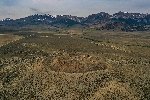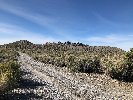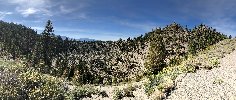MONO CRATERS VOLCANIC FIELD
California



 Panum Crater from the air. |
 Panum Crater. |
 Panorama from the crater rim. |
 Rhyolitic lava formation inside the lava dome. |
 Obsidian formation inside the lava dome. |
 Devil's Punchbowl. |